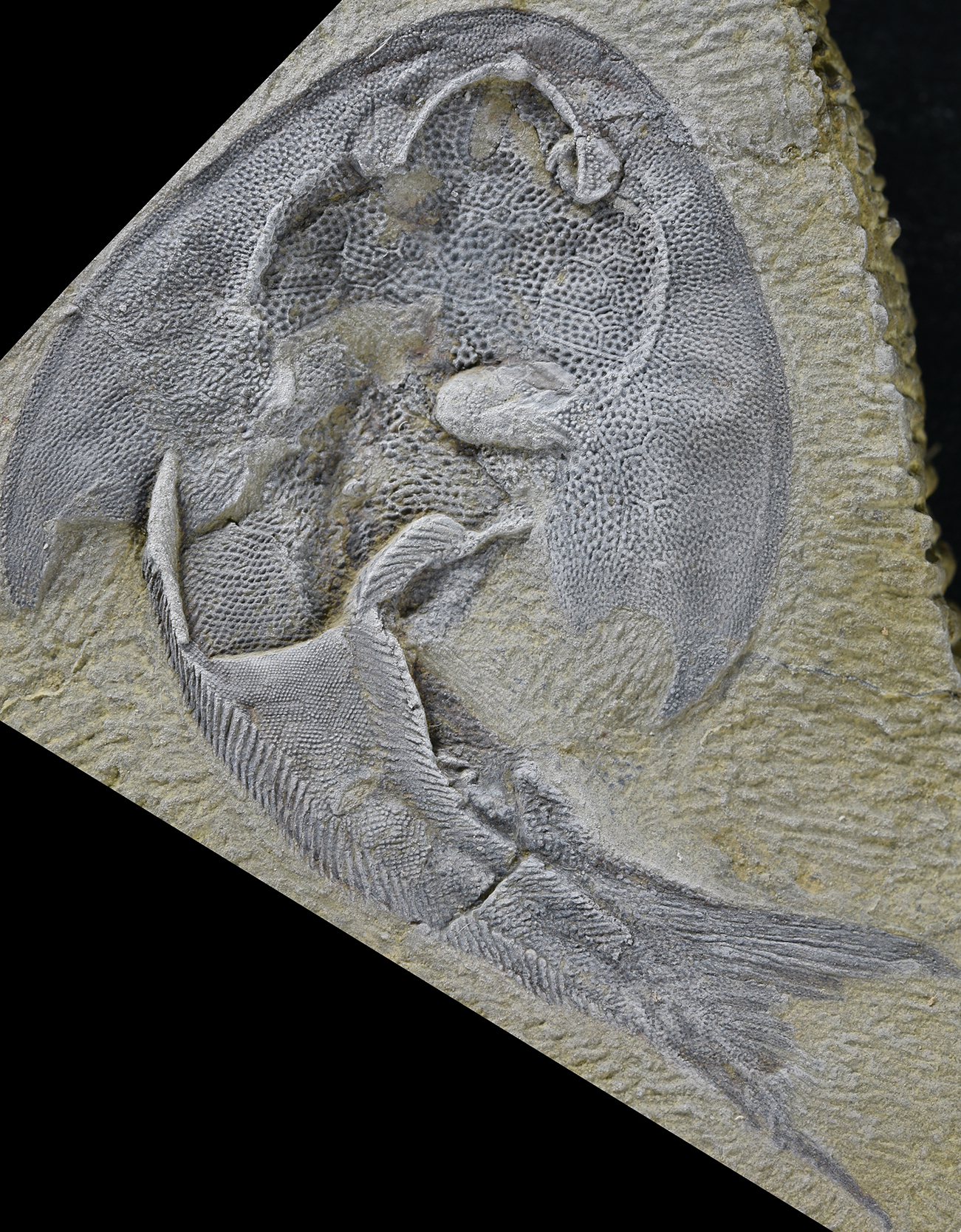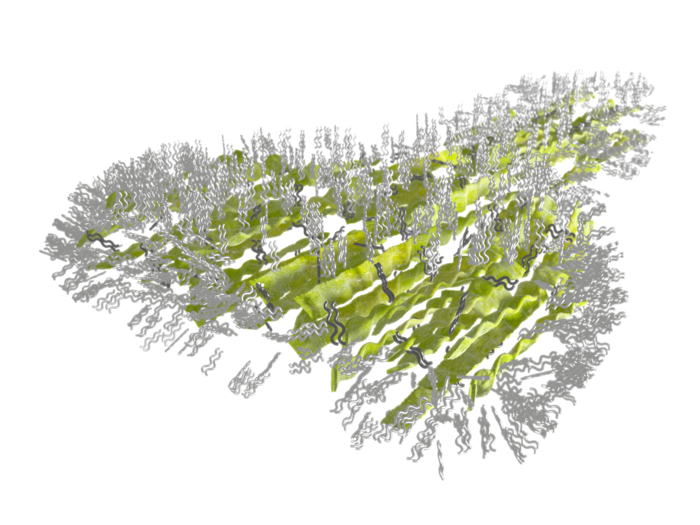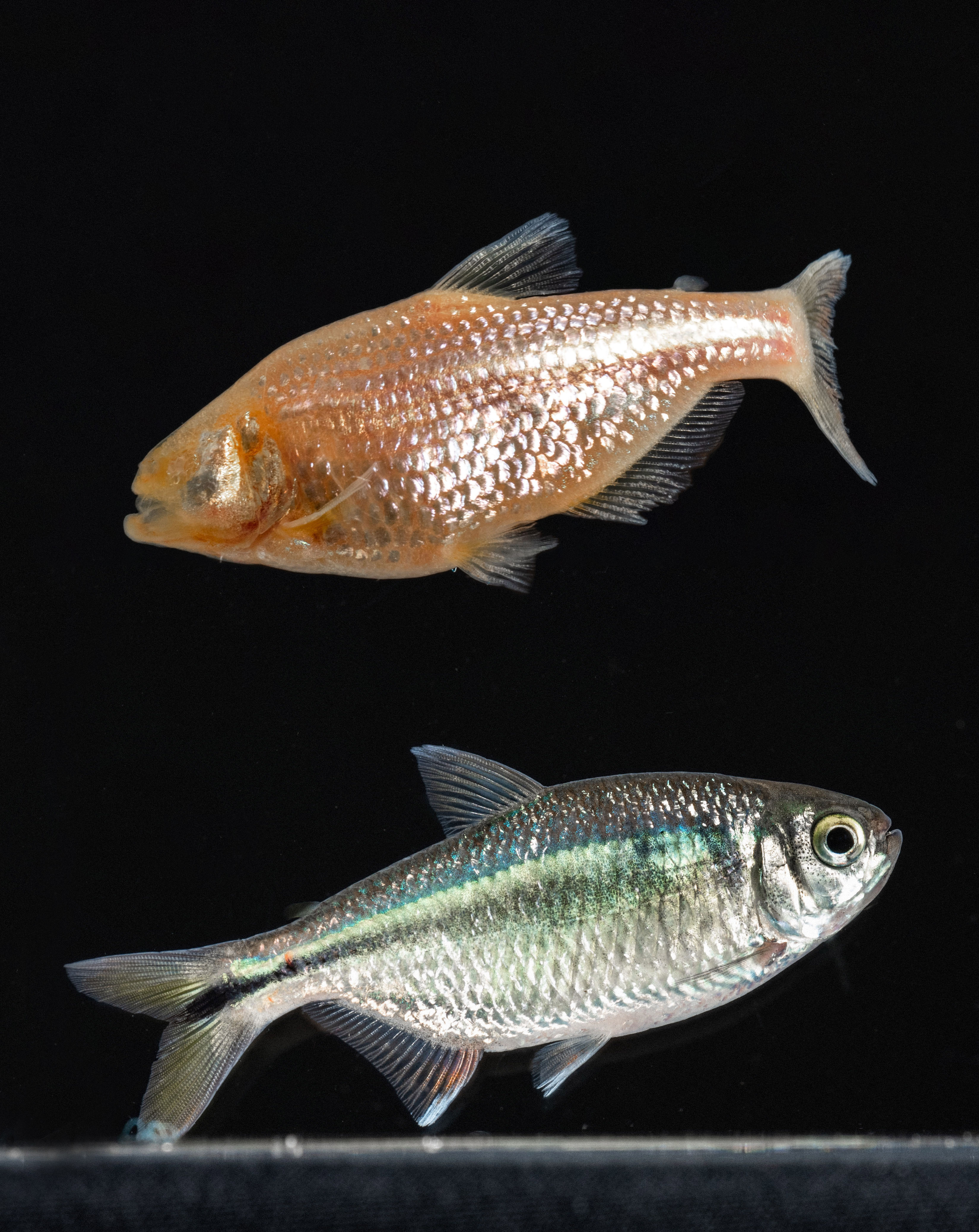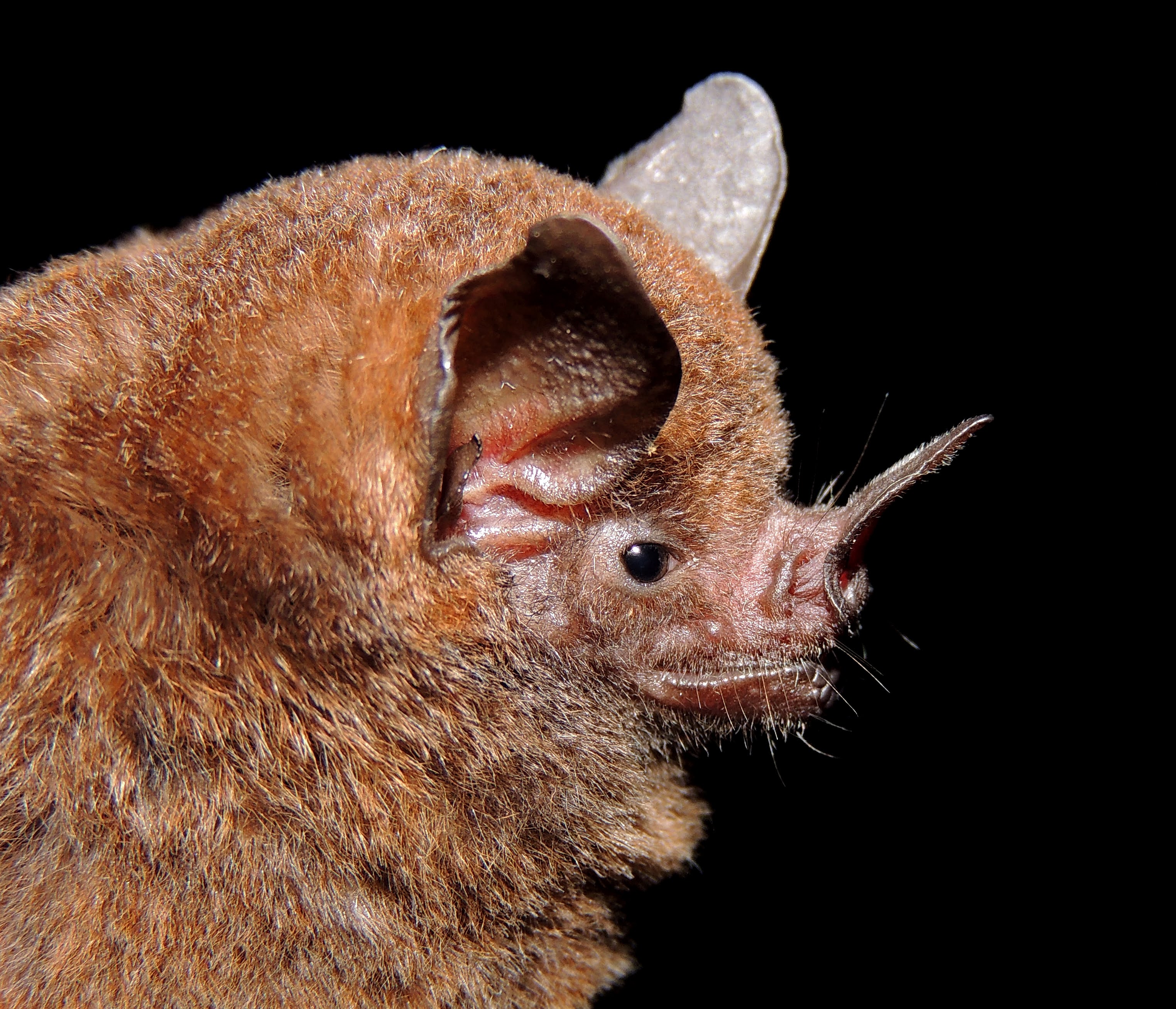The researcher and GRS Radioisotopes technician from the University of Seville, Jorge Rivera, has participated in an incredible discovery that is unique in Europe.
Tag: Evolution

Study shows differences between brains of primates — humans, apes and monkeys — are small but significant
While the physical differences between humans and non-human primates are quite distinct, a new study reveals their brains may be remarkably similar. And yet, the smallest changes may make big differences in developmental and psychiatric disorders.
Study: More Than One Way to Build a Black Bird
Scientists have so far found at least two genetic pathways leading to the same physical outcome: all-black feathers. This change was no random accident. It was a result of nature specifically selecting for this trait. The new study is published in the journal PLOS Genetics.
New Scottish fossil sheds light on the origins of lizards
A fossil discovery from Scotland has provided new information on the early evolution of lizards, during the time of the dinosaurs.

Dead fish breathes new life into the evolutionary origin of fins and limbs
A trove of fossils in China, unearthed in rock dating back some 436 million years, have revealed for the first time that the mysterious galeaspids, a jawless freshwater fish, possessed paired fins.
Armoured worm reveals the ancestry of three major animal groups
An international team of scientists, including from the Universities of Bristol and Oxford, and the Natural History Museum, have discovered that a well-preserved fossilised worm dating from 518-million-years-ago resembles the ancestor of three major groups of living animals.
Earliest land animals had fewer skull bones than fish – restricting their evolution, scientists find
The skulls of tetrapods had fewer bones than extinct and living fish, limiting their evolution for millions of years, according to a latest study.
Weedy rice has become herbicide resistant through rapid evolution
Biologists used whole-genome sequences of 48 contemporary weedy rice plants to show how herbicide resistance evolved by gene flow from crop rice. Almost all other cases of herbicide resistance in agricultural weeds result from selection of tolerant genotypes in the weed species.
Eight new species of tiny geckos tumbling out of Madagascar’s rainforests
An international team has discovered and named eight new day gecko species from Madagascar, and each of them is no longer than your pointer finger.
New discovery of panda species which may have been Europe’s last
Lumbering through the forested wetlands of Bulgaria around six million years ago, a new species of panda has been uncovered by scientists who state it is currently the last known and “most evolved” European giant panda.
Moths use ultrasound to defend against bats
Scientists discovered that ultrasonic defenses moths use to avoid bats are widespread in the insects, and that many harmless moths seem to mimic their toxic cousins to avoid becoming prey.
Idea of ice age ‘species pump’ in the Philippines boosted by new way of drawing evolutionary trees
Scientists have long thought the unique geography of the Philippines — coupled with seesawing ocean levels — could have created a “species pump” that triggered massive diversification by isolating, then reconnecting, groups of species again and again on islands.
Evolving to outpace climate change, tiny marine animal provides new evidence of long-theorized genetic mechanism
Some copepods, diminutive crustaceans with an outsized place in the aquatic food web, can evolve fast enough to survive in the face of rapid climate change, according to new research that addresses a longstanding question in the field of genetics. Barely more than a millimeter long, the copepod Eurytemora affinis paddles its way through the coastal waters of oceans and estuaries around the world in large numbers — mostly getting eaten by juvenile fish, like salmon, herring and anchovy.
Evolve… Innovate… Repeat: Scientists Peel Back the Layers of Virus-Host Evolution and Innovation
Scientists have uncovered an intriguing new understanding of how viruses and the hosts they infect evolve new innovations to outcompete each other. Culminating a 10-year research effort, the researchers tracked the way fitness landscapes constantly change in the ongoing struggle for survival.
What a martian meteorite can teach us about Earth’s origins
Astronomy postdoc Valerie Payré is on an international team that discovered the origin of the martian meteorite known as Black Beauty, one of the most-studied meteorites in the world. It may hold clues to the development of Earth and other terrestrial planets and help explain why Earth sustains life when its closest neighbor does not.
Root-farming gophers might be our closest agricultural relatives
Scientists have discovered that gophers harvest crops of roots for food, making the rodents the only other mammal known to farm.
Natural selection may be making society more unequal
Contemporary humans are still evolving, but natural selection favours those with lower earnings and poorer education – according to research from the University of East Anglia.

Gecko feet are coated in an ultra-thin layer of lipids that help them stay sticky
Geckos are famous for having grippy feet that allow them to scale vertical surfaces with ease. They get this seeming superpower from millions of microscopic, hairlike structures on their toes.
Hidden in Genetics: The Evolutionary Relationships of Two Groups of Ancient Invertebrates Revealed
Kamptozoa and Bryozoa are two phyla of small aquatic invertebrates that are related to animals like snails, earthworms, leeches, and ribbon worms.
Ancient microbes may help us find extraterrestrial life forms
Using light-capturing proteins in living microbes, scientists have reconstructed what life was like for some of Earth’s earliest organisms. These efforts could help us recognize signs of life on other planets, whose atmospheres may more closely resemble our pre-oxygen planet.
“Fuel of evolution” more abundant than previously thought in wild animals
The raw material for evolution is much more abundant in wild animals than we previously believed, according to new research from The Australian National University (ANU).
Snake, Lizard T Cell Mystery
The intriguing Australian sleepy lizard has raised new questions about vertebrate immunity after the surprise discovery of the evolutionary disappearance of genes needed for some T cell production in squamates.
A family of termites has been traversing the world’s oceans for millions of years
A new study has mapped out the natural history of drywood termites—the second largest family of termites.
Discovered: 150-year-old platypus and echidna specimens that proved some mammals lay eggs
Jars of tiny platypus and echidna specimens, collected in the late 1800s by the scientist William Caldwell, have been discovered in the stores of Cambridge’s University Museum of Zoology.

From cavefish to humans: Evolution of metabolism in cavefish may provide insight into treatments for a host of diseases such as diabetes, heart disease, and stroke
New research examines how cavefish developed unique metabolic adaptations to survive in nutrient-scarce environments. The study created a genome-wide map of liver tissue for two independent colonies of cavefish along with river fish to understand how cavefish metabolism evolved and how this may be applicable for humans.

Squid and octopus genome studies reveal how cephalopods’ unique traits evolved
Squid, octopus, and cuttlefish – even to scientists who study them – are wonderfully weird creatures.
Indiana Jones was right all along: Research shows the smaller the scorpion, the deadlier
Researchers in NUI Galway have shown, for the first time, that smaller species of scorpions, with smaller pincers, have more potent venoms compared to larger species with robust claws.
Brains and brawn helped crows and ravens take over the world
Crows and ravens are well known for their black color and the harsh “caw” sound they make. They are intelligent birds that use tools, solve complex abstract problems and speak a volume of words. But what is less well appreciated is how diverse they are. Their diversity is accompanied by their ability to live all over the world in a variety of habitats.
Natural History Museum of Utah releases Triceratops Traits, a new investigation for middle school science classes
In Triceratops Traits, students work alongside paleontologists to solve an evolutionary mystery by analyzing and interpreting data from the fossil record under the premise that natural laws have operated the same throughout the history of life on Earth to fit 7th grade learning standards in Utah and 6th-8th grades around the U.S.
New, clearest evidence yet that humans are a dominant force driving evolution
Humans reshape the environments where they live, with cities being among the most profoundly transformed environments on Earth. New research now shows that these urban environments are altering the way life evolves.
Over 1,700 book reviews of Charles Darwin’s works go online
A compilation of over 1,700 contemporary book reviews of Charles Darwin’s works, in 16 languages and spanning the years 1835 to the early 20th century was launched online. The collection of book reviews has been added to Darwin Online, a comprehensive scholarly website on Darwin. This new resource gives a comprehensive picture of the diversity in responses to Darwin’s work.
When and why did human brains decrease in size 3,000 years ago? New study may have found clues within ants
The brain is the most complex organ in the human body. Now, a new study has brought us closer to understanding some of its evolution.
FAU Receives NSF Grant to Explore Trait Evolution Across Species
The NSF grant will enable scientists to elucidate trait evolution across species using statistical and supervised machine learning approaches to vigorously and accurately predict general and specific evolutionary mechanisms that also will be applicable to various genomic and transcriptomic data for evolutionary discovery.
University of Washington researchers discover four dinosaurs in Montana
A team of paleontologists from the University of Washington excavated four dinosaurs in northeastern Montana this summer. The four dinosaur fossils are: the ilium of an ostrich-sized theropod; the hips and legs of a duck-billed dinosaur; a pelvis and limbs from another theropod; and a Triceratops specimen.
Darwin’s short-beak enigma solved
University of Utah biologists discovered that a mutation in the ROR2 gene is linked to beak size reduction in numerous breeds of domestic pigeons. Surprisingly, different mutations in ROR2 also underlie a human disorder called Robinow syndrome. The ROR2 signaling pathway plays an important role in the craniofacial development of all vertebrates.
Scientists pretend to be Neanderthals to explore how they caught birds in caves for food
Neanderthals, our closest relatives, became extinct between 40,000 to 35,000 years ago.
Prehistoric humans rarely mated with their cousins
The researchers re-analyzed previously published DNA data from ancient humans that lived during the last 45,000 years to find out how closely related their parents were.
Bacteria could learn to predict the future
Using computer simulations and a simple theoretical model, a new paper shows how bacteria could adapt to a fluctuating environment by learning its statistical regularities — for example, which nutrients tend to be correlated — and do so faster than evolutionary trial-and-error would normally allow.
The history of insects living on the open ocean tracked with the history of the currents they ride
The open oceans are harsh and hostile environments where insects might not be expected to thrive. In fact, only one insect group, ocean skaters, or water striders, has adapted to life on the open seas.
How these insects evolved to conquer the high seas, however, was not known.
Now, a study of the genetics of skaters by scientists from the National University of Singapore (NUS) and Scripps Institution of Oceanography at UC San Diego provides a clue. The answer has to do with when major currents in the eastern Pacific Ocean came into existence with each species of skater evolving to match the unique conditions of those currents.
Study shows how aspen forests maintain the diversity needed to adapt to changing environments
A new decade-long study by University of Wisconsin¬–Madison researchers reveals how aspen stands change their genetic structure over the years as trees balance defending themselves from pests with growth to compete for sunlight.
Dogs tell the difference between intentional and unintentional action
Over our long shared history, dogs have developed a range of skills for bonding with human beings.
Evolutionary ‘time travel’ reveals enzyme’s origins, possible future designs
“The distinction between the past, present and future is only a stubbornly persistent illusion,” Albert Einstein wrote. Now, researchers have used evolutionary “time travel” to study how an enzyme has evolved, with implications for future design. They will present their results at ACS Fall 2021.
Understanding how elephants use their trunk
The elephant proboscis (trunk) exhibits an extraordinary kinematic versatility as it can manipulate a single blade of grass but also carry loads up to 270 kilograms.
New fossils show what the ancestral brains of arthropods looked like
Exquisitely preserved fossils left behind by creatures living more than half a billion years ago reveal in great detail identical structures that researchers have long hypothesized must have contributed to the archetypal brain that has been inherited by all arthropods.
FAU Researcher Receives $1.8 Million NIH ‘Maximizing Investigators’ Research Award’
Raquel Assis, Ph.D., associate professor, College of Engineering and Computer Science, and a fellow of FAU’s Institute for Human Health and Disease Intervention, has received a five-year, $1.8 million “Maximizing Investigators’ Research Award” from the NIH. The goal of this early career award is to enhance the ability of investigators to take on ambitious scientific projects and approach problems more creatively.
New prehistoric ‘Hobbit’ creature is among three discoveries suggesting rapid evolution of mammals after dinosaur extinction
Research published today in the peer-reviewed Journal of Systematic Palaeontology describes the discovery of three new species of ancient creatures from the dawn of modern mammals, and hints at rapid evolution immediately after the mass extinction of the dinosaurs.
How Snakes Got Their Fangs
Ever wondered how deadly snakes evolved their fangs?

More pepper, please
A study published Aug. 11 in the Proceedings of the Royal Society B by researchers at the University of Washington and Stony Brook University reports on how bats and pepper plants in Central America have coevolved to help each other survive.
A brief history of the cabbage butterfly’s evolving tastes
The cabbage butterfly, voracious as a caterpillar, is every gardener’s menace. Turns out, these lovely white or sulfur yellow butterflies started trying to take over the planet millions of years before humans ever set foot on it.
Now how did that get up there?
New research is shedding light on how the nasal passage in dolphins and whales shifts during embryonic development, from emerging at the tip of the snout to emerging at the top of the head as a blowhole. The findings are an integrative model for this developmental transition for cetaceans.